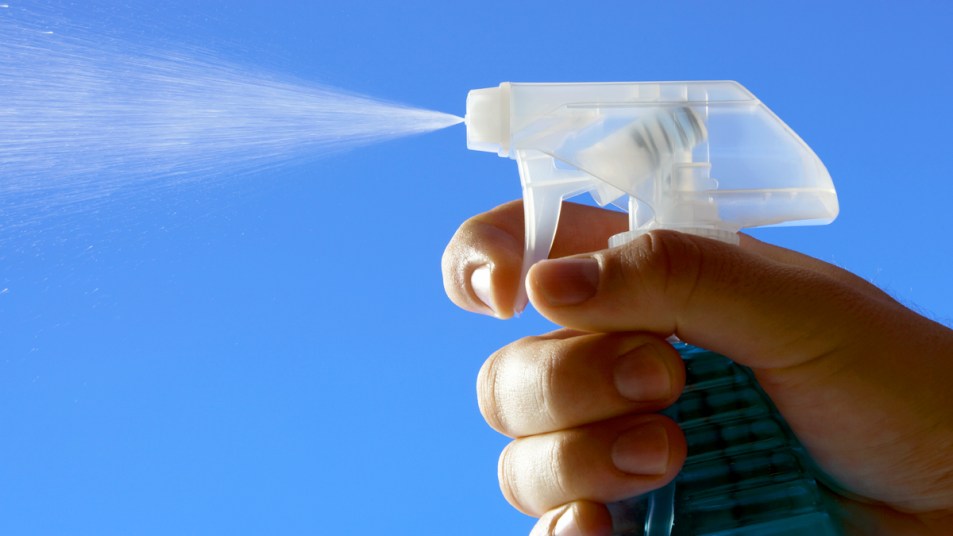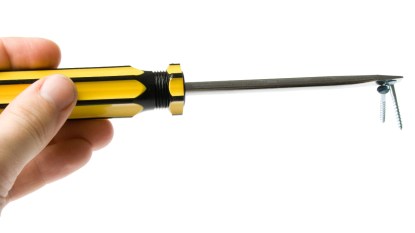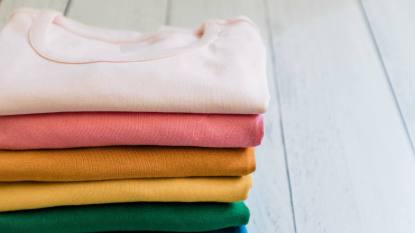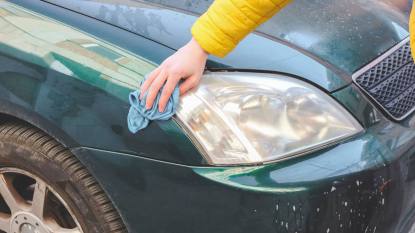8 Surprising Ways to Use Windex That Have Nothing to Do With Cleaning Glass

Finding new uses for products we already love is definitely what we’d call a win-win scenario. We’d also bet that most people have a bottle of Windex hanging out with the rest of their cleaning supplies — but probably don’t realize how useful the spray can really be!
Although we don’t recommend using it to treat zits or other ailments like the dad raves about in My Big Fat Greek Wedding, Windex can still help with a lot more than just making our windows shine.
Whether you’re dealing with stained clothes, dingy jewelry, or bugs welcoming themselves into your home, these uses for Windex (Buy at Walmart, $2.97) will make life so much easier.
Can you use Windex on microfiber?
Microfiber furniture can be a pain to clean — but not with Windex! Tiffany from Making the World Cuter shared how well the window cleaner got rid of the constant stains she was battling on a couple of microfiber chairs: “I spray each chair with Windex, not soak the chair mind you, just spray until the whole cushion has been spritzed. Then I take my scrub brush and brush out the spots.”
After gently scrubbing, she tucked them right back under a table to air out. “They dry fairly quickly if you don’t soak them, so it doesn’t have to be at night,” she added. You can use it on smaller furniture like Tiffany’s chairs or as a spot treatment for bigger things like a couch.
Does Windex clean other fabric?
There’s no need to go out and buy special laundry detergent for stained clothes. As long as it isn’t something delicate, like silk or a thin nylon, you should be able to lift the spot up with a few sprays of Windex thanks to its ammonia. Just let the window cleaner sit on the stain for about 10 or 15 minutes, then rinse off with water and wash the item as you normally would.
If you’re worried the blue color of Windex will end up adding another stain to your fabric (which can happen if you’re prone to accidentally letting it sit too long), you might want to try using the clear Windex with Vinegar Glass Cleaner (Buy at Walmart, $3.48) instead. As you probably know, vinegar is helpful for cleaning up messes around the house and will work wonders on your stained clothes, too.
Psst: This method can also make carpet and rug stains disappear!
Can you use Windex on toilets?
We all know the product is great at spiffing up bathroom mirrors, but the grime-fighting ingredients in Windex can make your toilet bowl shine, too. It might not be quite as powerful as stronger cleansers like bleach for tough cases, but can hopefully help you avoid needing heavier duty options.
Simply spray the inside of your toilet bowl with Windex and let it soak for about five minutes before giving it a quick scrub with a toilet brush, then flush all the mess away.
Can you use glass cleaner on countertops?
While you wait on Windex to work its magic in your toilet, you can wipe down your bathroom counters with the product. However, you might want to swap the bottle of glass cleaner for Windex Disinfectant Cleaner Multi-Surface (Buy at Walmart, $3.48).
The classic blue liquid will dislodge any gunk stuck to the counter well enough, but the multi-surface option contains extra germ-fighting ingredients that aren’t in the regular glass cleaner. And yes, you can use it for counters outside of the bathroom, too — as long as they aren’t made from a porous material like granite or marble, which usually require gentler cleansers.
Does Windex remove grease?
Yep! You can use Windex to get rid of any unsightly grease splatter around your oven. It will cut through the icky remnants of oils and stuck-on food without leaving behind streaks. It’s particularly helpful for range hoods and fan areas where the debris likes to gather. You can also use it on the backsplash as long as it isn’t made from a porous material.
Is Windex safe for jewelry?
Several professional jewelers, like the experts at Radcliffe Jewelers, explain that using hand lotions and other similar products while wearing our favorite diamond and silver accessories can cause film to build up and make them to lose their sparkle. Luckily, they also recommend giving them a tune up with a few spritzes of Windex!
For diamonds, Radcliffe Jewelers suggest spraying a soft bristle toothbrush with the cleaner and gently scrubbing to remove dirt and gunk from the surface. With silver, you can spray Windex right onto the item and again use a soft toothbrush or a soft cloth to wipe it down. In both cases, rinse the items off with warm water once you’re done to keep the chemicals from sticking around too long and dry them off with a lint-free cloth.
Can you use Windex to clean crystal?
If you have a collection of crystal glasses, bowls, and other dinnerware gathering dust on a shelf, it might be time to give them a good rinse. Unfortunately, you can’t just pop the delicate items in the dishwasher and call it a day. But considering they are made of a type of glass, it shouldn’t be too surprising to learn you can use Windex to make them shine again!
Just spray each piece and wipe them down with a cloth — and maybe grab some cotton swabs to really get into the crevices of any gorgeous designs cut into the crystal.
Does Windex kill insects?
Although the cleaning product doesn’t technically include any pesticides in its ingredients, countless people swear by Windex for keeping various bugs and creepy crawlies at bay.
That said, it’s important to note that spraying the liquid directly onto an insect, like ants or spiders, is basically just drowning it and might be a waste of your Windex. Plus, they probably have buddies waiting to take their place.
Instead, try spritzing Windex around the areas in your home that seem to be most prone to bugs sneaking in. The chemicals should make the entry less enticing for them. If they continue to march their way inside after that, it’s probably best to call in a professional pest control experts to take a look.
This article originally appeared on our sister site, First For Women.













